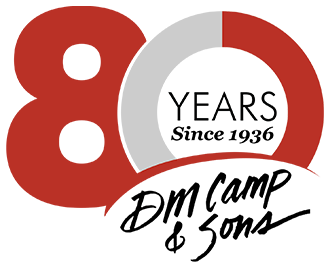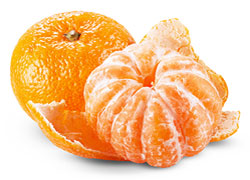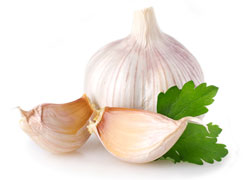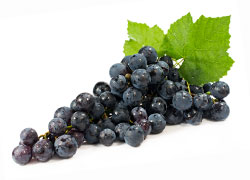Our Founder, Wofford Benjamin Camp

Wofford Benjamin Camp was raised on a cotton farm in South Carolina. The following excerpt written by author Jim Eleazer is a fantastic and detailed biography of W.B., as well as an introduction to the history of the farm. Eleazer was a frequent contributor to The Farm Quarterly, an Information Specialist at Clemson College, S.C., and author of A Dutch Fork Farm Boy.
"A South Carolina farm boy, now Mr. Cotton of California, took cotton out of the South to the West Coast...
Wofford Benjamin Camp wiped the red Carolina dust from his eyes. The cotton rows, even on his father's small patch, seemed endless and the weeds as thick as the hair on a hound's back. But young Camp allowed himself only a small breather. He was going to college in the fall and he needed every penny of his share of the crop. He was going to college to learn more about cotton, more than he could learn from the blister end of a hoe...
And Wofford Benjamin Camp did learn about cotton. He knew planting and chopping and picking almost from the day he could walk: he learned plant breeding and selection in college...Even then he knew more about cotton than some of his professors. He seemed to have been born with the knack of managing cotton, and this, combined with his college learning has made him one of the leading cotton scientists of the world, one of the biggest cotton farmers in California, and the hero of a rags to riches story that not even Horatio Alger could equal...
He is "Mr. Cotton of California," for it was he who adapted the South's cotton to the Coast, showed the westerners how to change from cattle to cotton, how to irrigate cotton, and more than any other man was responsible for the migration of cotton to the far west...
To find out what manner of man Bill Camp is we could go back to the little farm in the rolling red hills of up-state South Carolina.
It was a small farm and there were no hired hands- every member of the family pitched in at chopping and picking time. Chopping cut the school year short in the spring, and picking in the fall. Bill took his schooling out of what was left. By the time he was college age he had just finished the eighth grade. Courage and tenacity of purpose was written in everything he did...When Bill finished college in June, 1916, he had, literally, only the clothes on his back. But he did have a vast knowledge of cotton---he knew it from the soil to the bale on the farm, and he knew it from the laboratories of Clemson College. He needed a job, and he wanted a job in cotton. The College authorities recommended him to one of the DuPonts, who owned coastal lands in South Carolina and wanted to find some crops suited to the vast abandoned rice lands there. One of the things Bill tried was cotton, long staple cotton, on Combahee Plantation.
The famed Sea Island Cotton industry of Coastal Georgia and Carolina had all but been destroyed by the boll weevil, and a variety to replace it was needed. So, in cooperation with the USDA and Clemson, he put out extensive cotton plots there that year. The most promising variety in that test was called Acala, a cotton USDA had found in Mexico and on which a little work had been done in Texas. It was earlier than the late-growing Sea island variety...
War was brewing in Europe, and long staple Sea Island cotton had become essential for airplane fabric, tires, and other war uses. Officials of USDA prevailed upon Bill to go west and search for a place where suitable long-staple cotton could be grown. So he gave up his work at Combahee plantation and went west...
Bill had little encouragement from officials in Washington. They told him cotton couldn't be grown in the Far West; it had already been tried. But Dr. Taylor of the Bureau of Plant Industry had faith that it could, and he prevailed upon Bill to go and try it anew. He finally landed in Bakersfield, California, in time to make trial plantings in the spring of 1917. But he was a lonely man on a distant shore. California wanted none of cotton, "a poverty crop." He traveled around, by train and by foot, planting his test plots. He met J. A. Jastro, manager of the giant kern County Land Company who gave him permission to us company land on the edge of Bakersfield. At Fresno, W. T. nutting, father of the famous Thompson seedless grape, who saw the need for another crop to take some of the gamble out of the grape business, also turned over some plots for Bill's plantings. Mr. Nutting bought an old Ford car and gave it to him for his work, and from there on, Bill was ready to ride...
Bill has been called "Scientist turned Farmer", for it was in the scientific development of cotton that he first achieved a reputation. He was selected specifically for his scientific knowledge of cotton to search out the possibilities in California, and he was for ten years the head of the Shafter Research Station. He has extended his know-how to potatoes, and led the campaign against eradication of potato diseases on the Coast. He has his own research scientists now, but he knows what they are doing... Bill Camp is too good to be true, a wealthy and successful man apparently without enemies. He can drive a stiff bargain and take care of himself in a trade, but I have yet to hear of a single shady deal, or any doubt about his honesty and integrity..."











